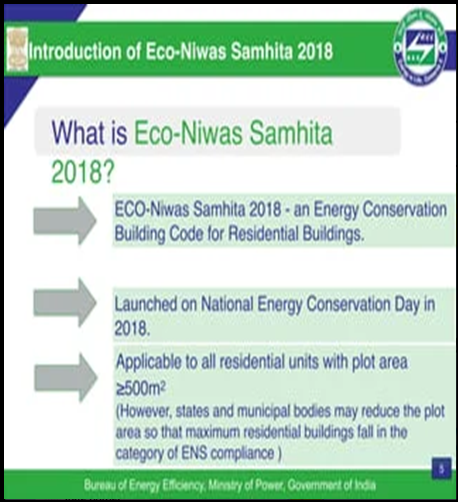ON SUSTAINABLE BUILDING MATERIALS
Why in the news?
Addressing energy inefficiency in residential buildings and the optimal use of Autoclaved Aerated Concrete (AAC) blocks for construction.
About Energy Inefficiency in Residential Buildings:
- With India’s rapid economic growth andurbanisation, addressing energy inefficiency in residential buildings is crucial to meet rising energy demands while reducing environmental impact.
- Residential Envelope Transmittance Value (RETV): The RETV, introduced by initiatives like the Eco-NiwasSamhita, measures heat transferthrougha building’s envelope.
- Lower RETV values lead to cooler indoor environments and reduced energy usage.
- Optimal Building Material – AAC Blocks: Autoclaved Aerated Concrete (AAC) blocks emerge as an optimal building material due to their low RETV, indicating thermal efficiency.
- Despite concerns about sustainability, AAC blocks offer a better balance between embodied energy and construction time compared to red bricks and monolithic concrete.
source:slideserve
| What is ECO Niwas Samhita ?
● The Ministry of Power launched ECO Niwas Samhita 2018 on National Energy Conservation Day 2018. ● It’s an Energy Conservation Building Code for Residential Buildings (ECBC-R). ● Focuses on building envelopes, mechanical systems, HVAC, lighting, electrical systems, and renewable energy. ● Consider India’s five climate zones. ● Primarily addresses energy efficiency, excluding water and other aspects. |




